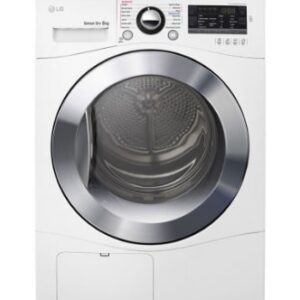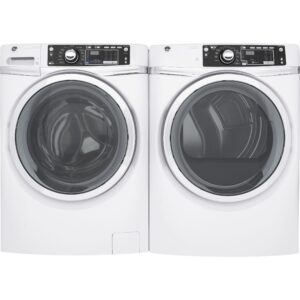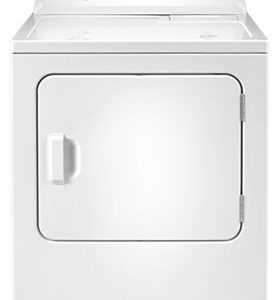Purchasing a brand-new washer and dryer can be an exciting time, but the installation process can also feel daunting, especially if you’ve never done it before. Whether you’re moving into a new home, replacing old appliances, or setting up a laundry area for the first time, the prospect of hooking up these large, heavy machines can be intimidating. However, with the right information and a little bit of elbow grease, installing a washer and dryer yourself is a very doable task.
In this comprehensive guide, we’ll walk you through the step-by-step process of installing a washer and dryer, from preparing the space to connecting the plumbing and electrical components. We’ll also explore the pros and cons of DIY installation versus hiring a professional, and offer some tips on how to get rid of your old appliances. By the end, you’ll have all the knowledge you need to confidently tackle this home improvement project on your own.
Assessing Your Laundry Room Setup
Before you dive into the installation process, it’s important to take a close look at your laundry room setup and ensure that it’s ready to accommodate your new washer and dryer. Here are a few key factors to consider:
Existing Plumbing and Electrical Connections
If you’re replacing an older washer and dryer, chances are you already have the necessary plumbing and electrical hookups in place. However, if you’re setting up a brand-new laundry area, you’ll need to make sure that the appropriate water supply lines, drain connections, and electrical outlets are installed and ready to go.
Flooring and Leveling
Washing machines and dryers need to be placed on a solid, level surface to function properly. Ideally, your laundry room should have a hard, non-carpeted floor that can support the weight of these heavy appliances. You’ll also need to make sure the floor is level, as an uneven surface can cause your machines to vibrate and move around during use.
Ventilation and Clearance
Dryers, in particular, require proper ventilation to safely expel hot air and lint. Make sure you have a dedicated dryer vent installed and that there’s enough clearance behind the machine for the vent hose to be properly routed and secured.
Measurements and Dimensions
Before purchasing your new washer and dryer, measure the available space in your laundry room to ensure the appliances will fit. Pay close attention to the width, depth, and height of the machines, as well as any doorways or hallways they’ll need to pass through to reach their final destination.
DIY Washer and Dryer Installation: Step-by-Step Guide
Once you’ve assessed your laundry room setup and are confident that it’s ready to accommodate your new appliances, it’s time to tackle the installation process. Here’s a step-by-step guide to help you get the job done:
Step 1: Prepare the Area
- Ensure the power is turned off to the existing washer and dryer circuits.
- Clear the area around the old machines, making sure to remove any debris or obstacles.
- Measure the space to confirm your new appliances will fit properly.
Step 2: Disconnect the Old Washer and Dryer
- Unplug the power cords from the electrical outlets.
- Turn off the water supply valves and disconnect the water supply hoses.
- Carefully remove the drain hose from the standpipe or sink.
- If you’re replacing both a washer and dryer, be sure to disconnect the dryer vent as well.
Step 3: Install the New Washer
- Position the new washer in its designated spot, leaving enough clearance for the water supply hoses and drain hose.
- Connect the hot and cold water supply hoses to the corresponding valves.
- Attach the drain hose to the standpipe or sink, using a hose guide to prevent kinking.
- Plug the washer into the electrical outlet and level the machine by adjusting the adjustable legs.
Step 4: Install the New Dryer
- Position the new dryer near the washer, leaving enough space for the vent hose.
- Connect the vent hose to the back of the dryer, securing it in place with a clamp or strap.
- Route the vent hose through the wall or ceiling, making sure it’s as straight and short as possible.
- Plug the dryer into the appropriate electrical outlet.
Step 5: Test and Secure the Connections
- Turn on the water supply valves and check for any leaks at the hose connections.
- Plug in the washer and dryer and run a test cycle to ensure both appliances are functioning properly.
- Once everything is working as it should, secure the machines in place by tightening the leveling legs or anchoring them to the floor.
Pros and Cons of DIY Washer and Dryer Installation
While installing a washer and dryer yourself can be a satisfying and cost-effective DIY project, it’s important to weigh the potential benefits and drawbacks before deciding to tackle the job on your own.
Pros of DIY Installation
- Cost Savings: Avoiding the expense of professional installation can save you a significant amount of money, especially if you’re on a tight budget.
- Hands-On Learning: Completing the installation yourself can be a valuable learning experience, giving you a better understanding of how your appliances work.
- Flexibility and Control: DIY installation allows you to work at your own pace and make adjustments as needed to ensure a perfect fit in your laundry room.
Cons of DIY Installation
- Potential for Mistakes: Improper installation can lead to water leaks, electrical issues, or even damage to your new appliances, which can be costly to repair.
- Safety Concerns: Connecting gas lines or electrical components can be dangerous if you don’t have the proper knowledge and experience.
- Warranty Implications: Some manufacturers may void the warranty on your new appliances if they weren’t installed by a professional.
Hiring a Professional Installer
If the thought of installing a washer and dryer yourself feels overwhelming or you’re simply not comfortable with the process, hiring a professional installer may be the way to go. Here are a few reasons why you might consider this option:
Expertise and Experience
Professional installers have the knowledge and skills to ensure your new appliances are properly connected and functioning safely. They’re familiar with local building codes and can handle any unexpected challenges that may arise during the installation process.
Warranty Protection
Many appliance manufacturers require professional installation to maintain the warranty on their products. Hiring an expert can give you peace of mind knowing that your investment is protected.
Convenience and Time Savings
Letting a professional handle the installation can save you a significant amount of time and effort, allowing you to focus on other aspects of setting up your new laundry room.
Potential Cost Savings
While the upfront cost of professional installation may be higher, it can potentially save you money in the long run by preventing costly repairs or mistakes.
Disposing of Your Old Washer and Dryer
Once your new washer and dryer are installed and up and running, you’ll need to figure out what to do with your old appliances. Here are a few options to consider:
Donate or Sell
If your old washer and dryer are still in good working condition, you may be able to donate them to a local charity or sell them to someone in need. This is a great way to give your appliances a second life and keep them out of the landfill.
Recycle
Many municipalities and waste management companies offer recycling programs for large appliances. This is an environmentally-friendly option that ensures your old machines are properly disassembled and their components are reused or disposed of safely.
Hire a Junk Removal Service
If your old washer and dryer are beyond repair or you simply don’t want the hassle of trying to donate or recycle them, you can hire a professional junk removal service to haul them away for you.
Conclusion
Installing a washer and dryer on your own may seem like a daunting task, but with the right preparation and a little elbow grease, it’s a very achievable DIY project. By following the step-by-step guide outlined in this article and weighing the pros and cons of DIY installation versus hiring a professional, you can confidently tackle this home improvement project and get your new laundry setup up and running in no time.
Remember, the key to a successful washer and dryer installation is to take your time, pay close attention to safety precautions, and don’t hesitate to ask for help or seek professional guidance if you encounter any challenges along the way. With a little bit of planning and a lot of determination, you can be enjoying the convenience of your brand-new appliances in no time.
So, what are you waiting for? It’s time to roll up your sleeves and get to work on your washer and dryer installation project!






